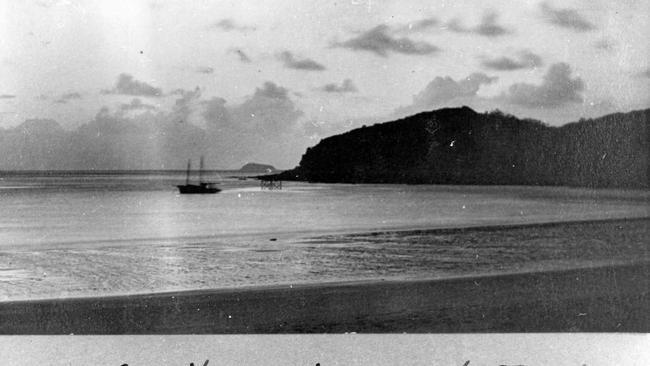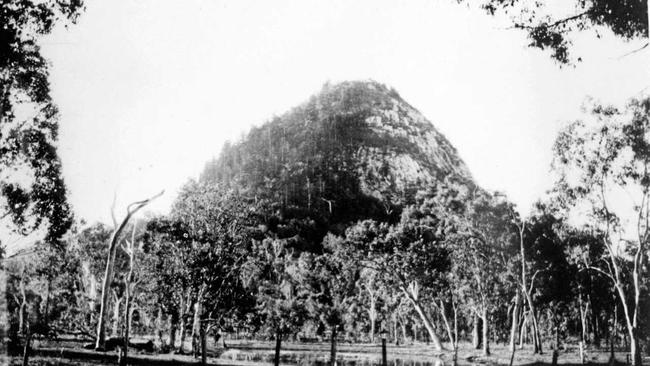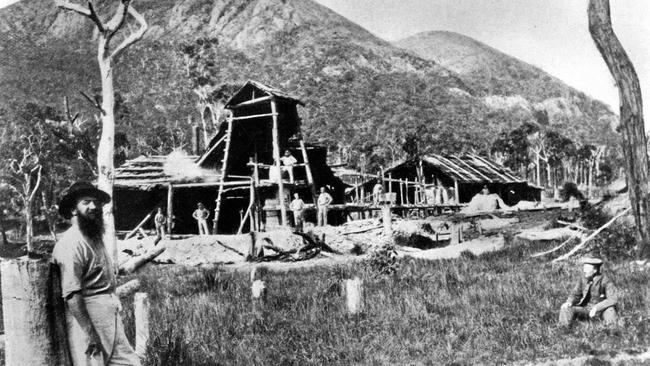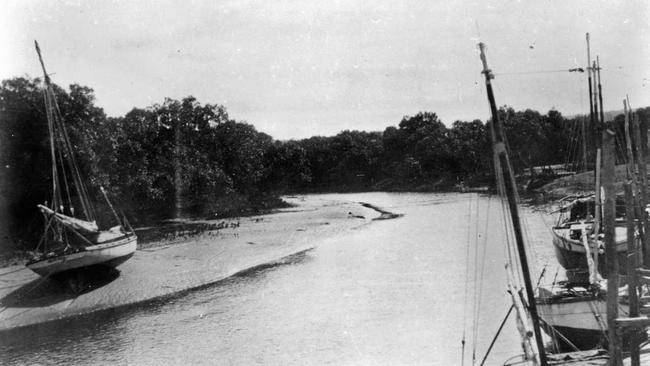RACIST PAST: The history of our place names
EXPLAINED: 9 locations and their shameful origins

Community News
Don't miss out on the headlines from Community News. Followed categories will be added to My News.
WHAT'S in a name?
In the case of many of our popular destinations and icons, the answer is frontier violence, massacres, displacement and undeniable racism.
While most of us would not give a second thought when we hear "Mount Wheeler" or "Ross Creek", the truth is they reflect horrific injustices on Indigenous Australians.
Some names are clearly offensive, "Black Gin Creek Road", but others you have to dig deeper to discover their racist past.
Below is a brief history of place names in and around the Rockhampton and Capricorn Coast regions:
Mount Jim Crow, Mulara:

THE origins of the name "Mount Jim Crow" are unclear, though there is no doubt over the term's deeply racist roots.
"Jim Crow" became the vernacular for racial segregation laws in the United States from the 1940s until the Civil Rights Act of 1964 and Voting Rights Act of 1965.
But the name itself dates back tot he early 1830s, when when white actor Thomas Dartmouth "Daddy" Rice performed minstrel routines as the fictional character "Jim Crow" - a clumsy, dimwitted black slave.
Rice claimed to have developed the character after he saw an elderly black man singing a song called "Jump Jim Crow" in Louisville, Kentucky. (Source:history.com)
And an 1880s essay on the "feat of scaling Jim Crow" in The Morning Bulletin speculates on this history. However, a discovery atop the mountain discounts the theory. An excerpt reads:
"While we have been puzzling ourselves at intervals about the name Jim Crow, associating it with the refrain of one of the earliest of Nigger Minstrels' songs:
Turn about, wheel about, And do Just so; And every time you wheel about Jump Jim Crow."
They went on to write:
"Jim is not a hero worthy such a memorial.
"But here, at the top, we seem to find a solution of the question of name. From the trunk of a pine tree a patch of bark has been cut in the fashion customary with surveyors, and on the wood, neatly engraved with a chisel 't HC PP JC.'
"The cross is at the top and Jim Crow's initials modestly placed at the bottom. Till we have some other explanation, we will understand this mountain bears the name of its first surveyor, and as he evidently reached the top of it, he is entitled to the honour."
Mount Wheeler, Bondoola:

"CRUEL and merciless" describe Frederick Wheeler, of Native Police infamy.
Arguably more notorious than any other officer in the force of the day, Insp Wheeler killed and sanctioned the slaughter of Indigenous people in and around Southern and Central Queensland.
Again, the Department of Natural Resources and Mines do not hold records of how Mount Wheeler was officially named.
There is speculation it was after John Wheeler, Gold Commissioner at Peak Downs, there is anecdotal evidence to suggest it was in fact after the "uniformed mass-murderer".
Museum collector George Wilkins visited Rockhampton in the 1920s, and notes the following:
Years ago, a sergeant of the police, enthusiastic in his duty of quelling aboriginal disturbances, developed a blood lust and sought to carry on a wholesale slaughter in support of the theory that no matter how a good a black fellow may be, he is better dead. (Wilkins 1928: 112)
"Saying 'two or three hundred' were supposed to have driven up the mountain side and over the sides, `to be dashed to pieces on the rocks below', Wilkins dryly noted `it is curious to notice that a hundred or so does not seem to matter in the estimate of number of victims in a tragedy'."
(Source: Richards, J, University of Queensland)
Black Gin Creek Rd, Alton Downs:
OBVIOUSLY.
Black Gin Creek Rd, Alton Downs is no stranger to the racism radar, for good reason.
In 2008, anti-racism campaigner and University of Southern Queensland lecturer Stephen Hagan stirred a reaction among Morning Bulletin readers.
One anonymous caller claimed it was named after a black-colour gin bush which grew along the creek, but there is no confirmation this bush actually exists.
At the time, local historian Lorna McDonald, who wrote Rockhampton: a history of city and district, described the debate over Black Gin Creek Road as "a bit of a storm in a teacup".
"It was named very, very early in the settlement here, and I think, from memory, it got its name because one of the early settlers saw a black woman washing in the creek.
"That would go back probably to the 1860s.
"It probably means something very different from what it meant 150 years ago."
(Name reflects racist history, read story here)
Ross Creek, Yeppoon:

THE popular Capricorn Coast fishing spot is named after Robert Ross, the principal land owner on the mainland who removed the Kanomi people from North Keppel Island after complains they were disturbing his cattle.
Andrew Thompson shares this piece of history on ajthompson.com.au.
He states, "Distressed, some of the natives tried to swim back across the 12km of ocean. Most drowned or were taken by sharks, while a few made it back to the islands.
"In 1912, the last of the Kanomi-Woppaburra tribes were forcibly removed from the Keppel Islands and relocated to Fraser Island by the Queensland Government.
"Today, Great Keppel Island is also referred to as Wopparaburra after the original inhabitants, and descendents of the clan still have landholdings there."
History tells harrowing stories of the surviving Woppaburra poeple used as unpaid laborours on the islands.
It is said when Woppaburra refused to work they were "chained up in a tidal cave to teach them a lesson". (Source: Phil Fitzpatrick)
A rusting iron ring embedded in a coastal shelter on Little Svendsen's Beach, South Keppel is said to be evidence of this.
BROADER QUEENSLAND:
Morinish, Rockhampton region: There is well-documented killing of Aboriginal people at nearby Morinish in 1867.
The Leap, north of Mackay: Named for the plunge of an Aboriginal woman with a child in 1867 who chose suicide to avoid capture or killing by European vigilantes and Native Police.
"Battle Hole", Barcoo River: Refers to the killing of many Indigenous people by local settlers during the 1870s.
"Skull Hole", Cloncurry: A Native Police watering hole, named for the number of skulls and human bones in the area.
Murdering Point, Innisfail: Named to record the killing of a small number of survivors from the Maria shipwreck by Aboriginal people in 1872.
OTHER TERMS USED IN PLACE NAMES:
Trooper: Refers exclusively to the Aboriginal members of the Native Police.
Boundary: Last year, the State Government considered supporting a move to change the name of "Boundary Streets". They refer to curfews enacted as part of the racist policy, which saw Indigenous people's forced back behind the boundaries at certain times under the threat of incarceration and violence.
OTHER RACIST NAMES:
One edition of Placenames Australia, the newsletter of the Australian National Placenames Survey, stated there were 19 Black Gin Creeks across Australia, 16 of them in Queensland.
There were also seven Blackfella Creeks in Australia, and two of them in Queensland. The Northern Territory also had a Blackfella Spring and Rockhole.
There were eight Nigger Creeks in Queensland and an Abo Creek in Tasmania, a Black Gin Gully and Ridge in NSW, and a Black Gin Rocks and Wells in Western Australia.
The newsletter said the Geoscience National Gazetteer named many other similar names around Australia.
"Twenty-one place names feature the word nigger," the newsletter said.
"Ten of these are Nigger Creeks situated in the Northern Territory and Queensland there is also a Mount Nigger in Queensland.
"Seven names feature Nigger(s)head, including Niggerhead Creek, Niggerhead Rocks, and Mount Niggerhead. There is also a Nigger's Bounce in Queensland.''
Originally published as RACIST PAST: The history of our place names


